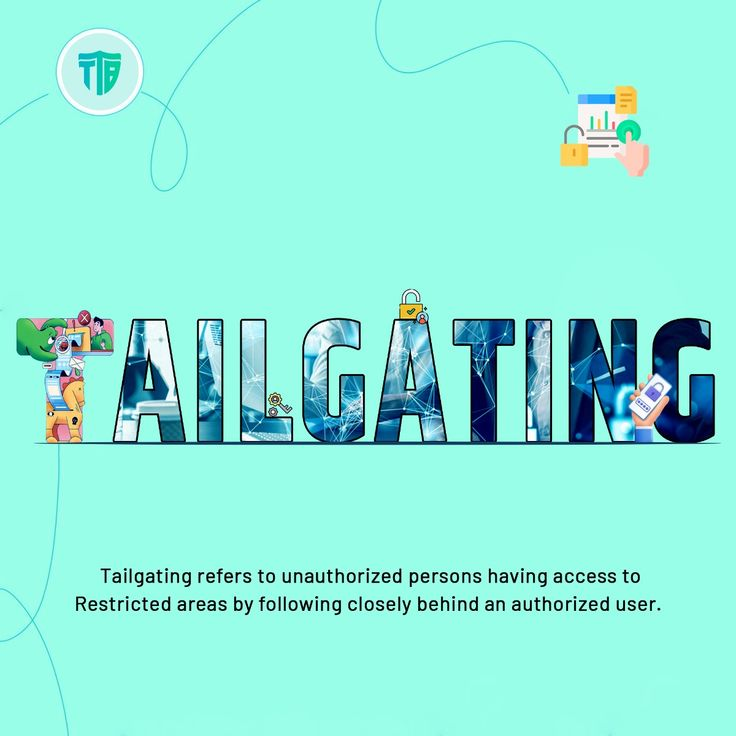What is Tailgating in Cyber Security
Tailgating, also known as “piggybacking,” is a common social engineering attack in cybersecurity where an unauthorized person gains access to a restricted area by following closely behind an authorized person. This type of security breach exploits human trust and the tendency to hold doors open for others, even in secure environments.
Understanding Tailgating
Tailgating is a physical security breach that occurs when an unauthorized individual gains access to a secure or restricted area by following someone who is authorized. The attacker relies on the unsuspecting person’s trust or courtesy, taking advantage of social norms to bypass security measures without being detected.
For example, in an office environment, an attacker might wait near the entrance until an employee with access to the building arrives. The attacker then quickly follows the employee through the door without swiping their own access card, effectively bypassing security.
How Tailgating Works
Tailgating is a simple but effective method of gaining unauthorized access. Here’s how it typically unfolds:
- Observation: The attacker identifies a secure area they wish to access, such as an office building, data center, or restricted section of a facility.
- Timing: The attacker waits near the entrance, often pretending to be preoccupied, until an authorized person approaches.
- Following: As the authorized person opens the door with their access card or key, the attacker quickly follows them through the door before it closes, often using a friendly gesture like holding the door open to avoid suspicion.
- Access Gained: Once inside, the attacker can move around freely, potentially accessing sensitive areas, data, or equipment. Don’t miss to check out visit website: inspiremind.xyz
Types of Tailgating Attacks
Tailgating can be executed in several ways, depending on the environment and the attacker’s objectives:
- Physical Tailgating: The most common form, where an attacker physically follows an authorized person into a secure area.
- Vehicle Tailgating: In this scenario, an unauthorized vehicle follows closely behind an authorized vehicle through a secure gate, gaining access to restricted parking lots or facilities.
- Employee Collusion: In some cases, tailgating may involve collusion between an insider and an outsider, where an employee knowingly allows an unauthorized person to follow them into a secure area.
Risks Associated with Tailgating
Tailgating poses significant security risks, especially in environments where sensitive data, valuable assets, or critical infrastructure are present. Some of the key risks include:
- Data Breaches: An unauthorized person gaining access to areas where sensitive data is stored can lead to data theft, loss, or breaches.
- Theft of Assets: Tailgating can result in the theft of physical assets, such as computers, servers, or other valuable equipment.
- Espionage: In industries dealing with proprietary information or trade secrets, tailgating can facilitate corporate espionage.
- Disruption of Operations: An unauthorized person could tamper with systems or processes, leading to disruptions in business operations or critical services.
- Physical Security Threats: Tailgating can also pose a physical security risk, as it allows unauthorized individuals to access areas that should be secure from intruders.
Preventing Tailgating
Organizations can implement several measures to prevent tailgating and enhance physical security:
- Access Control Systems: Installing robust access control systems, such as key card entry, biometric scanners, or turnstiles, can help ensure that only authorized personnel enter secure areas.
- Security Awareness Training: Educating employees about the risks of tailgating and encouraging them to be vigilant can reduce the likelihood of such incidents. Employees should be trained to politely challenge anyone attempting to follow them into a secure area.
- Escort Policies: Implementing strict escort policies for visitors or contractors can prevent unauthorized individuals from gaining access through tailgating.
- Video Surveillance: Monitoring entrances and exits with video surveillance cameras can deter potential tailgaters and help identify security breaches.
- Anti-Tailgating Devices: Devices such as mantraps (double-door systems) or anti-tailgating turnstiles can physically prevent multiple people from entering a secure area simultaneously.
- Enforcing “No Tailgating” Policies: Clear policies and procedures regarding tailgating should be communicated to all employees. Reinforcing these policies regularly helps maintain a security-conscious culture.
Conclusion
Tailgating is a prevalent and often underestimated security threat in many organizations. By exploiting human nature and social norms, attackers can gain unauthorized access to secure areas, leading to potentially severe consequences. However, with proper awareness, training, and the implementation of robust security measures, organizations can effectively mitigate the risks associated with tailgating and protect their sensitive data and assets. Understanding the threat of tailgating and taking proactive steps to prevent it is crucial for maintaining a secure environment. Whether it’s through advanced access control systems, employee training, or the use of physical barriers, every organization should prioritize the prevention of tailgating to safeguard against unauthorized access and potential security breaches.
FAQS
1. What is tailgating in cybersecurity?
Tailgating, in the context of cybersecurity, refers to the practice of an unauthorized individual gaining access to a restricted area by closely following an authorized person. This technique exploits social trust and is often used to bypass physical security measures, such as access control systems and security personnel.
2. How does tailgating pose a threat to organizations?
Tailgating can compromise an organization’s physical security and lead to various risks, including data theft, sabotage, and espionage. Once inside a restricted area, an intruder could potentially access sensitive information, tamper with equipment, or introduce malicious software into the network.
3. What are some common examples of tailgating?
Common examples of tailgating include someone following an employee through a secure door without proper credentials, using fake credentials to gain entry, or using an employee’s ID card to access restricted areas under false pretenses.
4. What measures can organizations take to prevent tailgating?
Organizations can implement several measures to prevent tailgating, including:
- Access Control Systems: Use of biometric scanners, ID card readers, and other secure authentication methods.
- Security Training: Educating employees about the importance of not allowing strangers to enter secure areas and reporting suspicious behavior.
- Physical Barriers: Installing turnstiles or security gates that require individual authentication.
- Escort Policies: Requiring visitors to be escorted by an authorized employee.
5. How should employees respond if they encounter tailgating attempts?
Employees should remain vigilant and follow established security protocols. If they notice someone attempting to tailgate, they should:
- Politely question the individual’s presence or credentials.
- Refuse entry if the person cannot provide valid identification or authorization.
- Report the incident to security personnel or management immediately.

Alex Thompson is an avid writer with a broad range of interests, from sports and fitness to tech gadgets and personal finance. With a background in media and communication, Alex enjoys breaking down complex topics into digestible, engaging content that resonates with readers. His articles often reflect his own experiences and hobbies, making them relatable and practical. When he’s not writing, Alex can be found at the gym, exploring new tech, or planning his next outdoor adventure.

